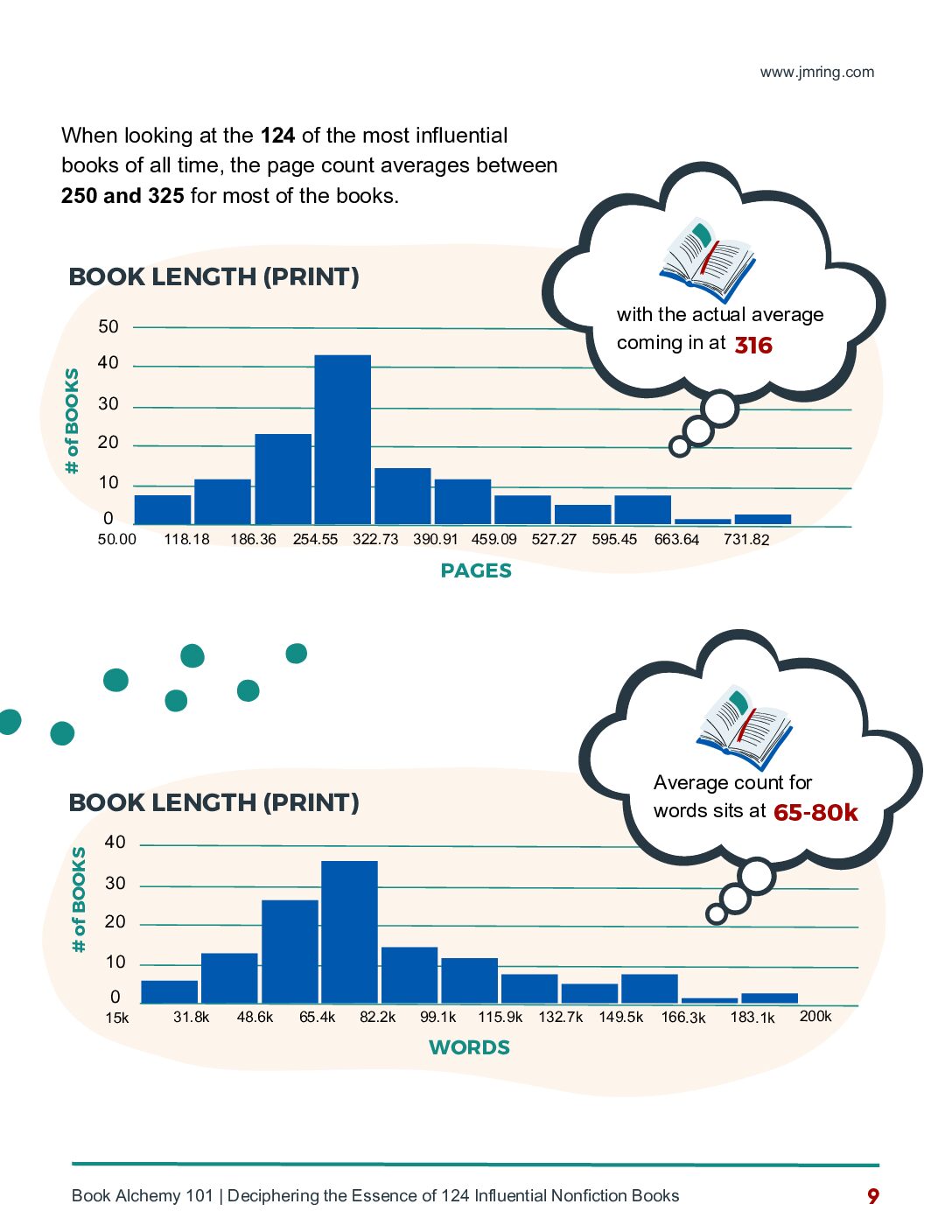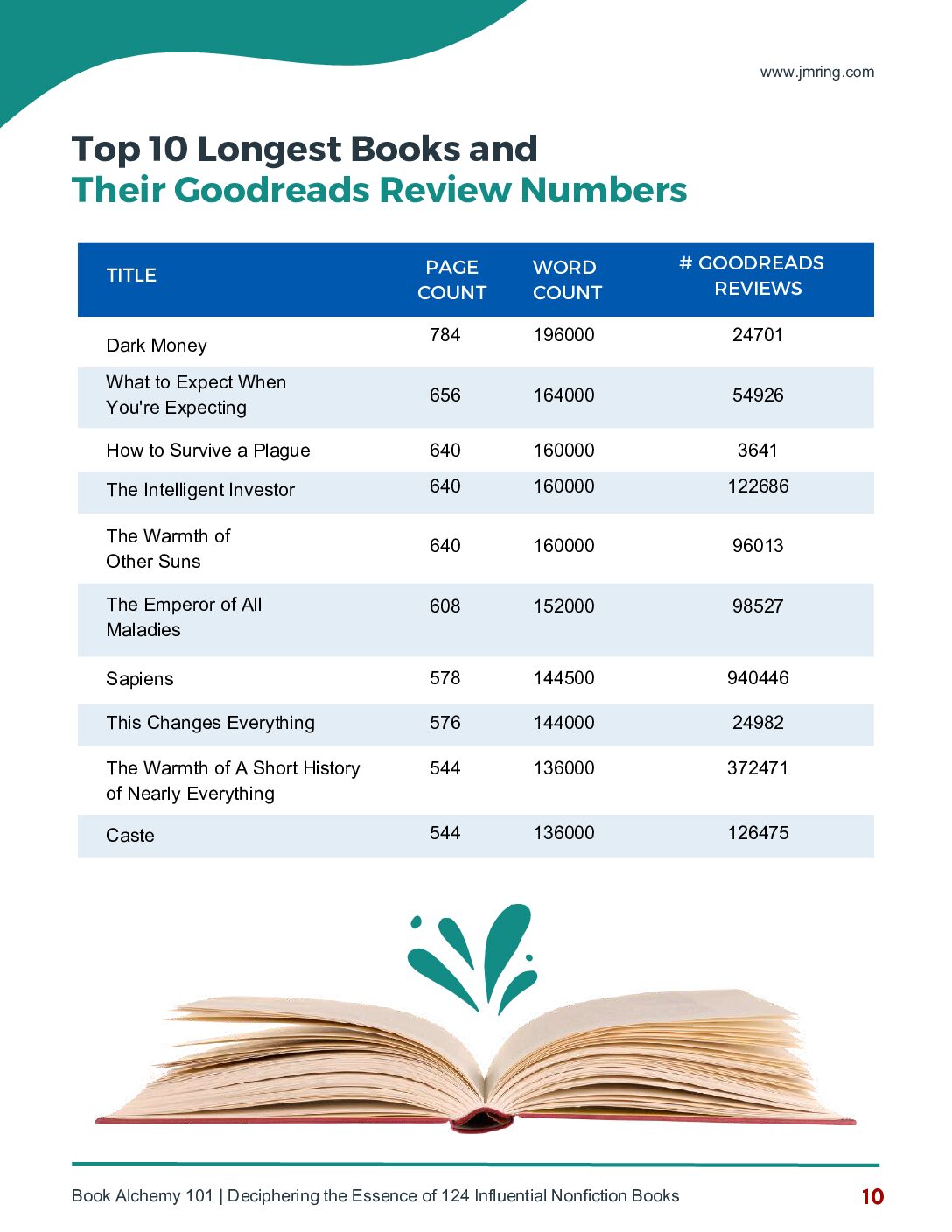And how long your book should be in pages and words
Word count is an important consideration for nonfiction authors. The answer is not worth selling your favorite Starbucks drink to the devil, but heed the following words.
How long should my book be?
The really short answer: More words than you probably want to write.
The quick answer: The book needs to be long enough to deliver on the promise that hooked the reader.
The longer answer: How long your book should be depends on a variety of factors that we’ll cover in this post.
Read through to the end and you’ll have a clear idea how long your book should be.
You’ll learn:
- How to convert page count to approximate word count.
- Industry standards for nonfiction books.
- How to analyze your book for word count planning (along with vital questions to ask about your book).
- How to make your book longer if it’s not up to snuff.
But note: worrying about your book’s length before you’ve written a word is a losing game. Instead, close out this post and start writing, or at the very least, work on your outline.
In my decade of working with authors, I’ve seen people get stuck with their head in the sand of the wrong questions. They let themselves become derailed for the wrong reasons. Don’t let this be you.
Start your book and then finish the race.
Page Count to Word Count
If you think in pages, no worries.
The average number of words per page in a nonfiction book is 250.
So, calculate your preferred word count based on this.
Page count X 250 = word count.
Industry Standards for Nonfiction Book Length
Here are some of the typical word counts for various nonfiction genres:
- Self-help: 20,000–70,000 words
- Business: 40,000–80,000 words
- Memoirs: 60,000–90,000 words
- Academic/technical books: 70,000+ words
- Short nonfiction books: 20,000–40,000 words (e.g., ebooks, guides, short how-to prescriptions)
When looking at the 124 of the most influential books of all time, page count averages between 250 and 325 for most of the books.
Using our page count calculator, the top nonfiction books of all time range from 65k-80k words on average.


Download the full report on this in-depth study here for free for answers to your most poignant book related questions.
Books are also getting shorter. According to a study done by Scribe Media, “The average #1 bestselling book length has fallen by 42% in just 7 years.”
Maybe our collective attention span is getting shorter. Nevertheless, of all the NY Times bestsellers, the average page length is still 273 pages (68k words).
The lesson? Don’t worry too much about industry standard. The sands are shifting, and the creme will rise to the top.
Okay, But Is My Book Long Enough?
Compare your book to various word count levels:
- 10k words: This is not a book. It is just a long blog post.
- 20 k words: You’re barely nicking the bottom of the eBook bare minimum.
- 40 k words: The minimum for a print book to look and feel like an actual book. However, include images, graphs, and other charts to fill out the pages.
- 50–80k: This is the ideal word count range for a paperback or audio version of a nonfiction book. Anything under is too short. Anything longer and you’ll lose the reader.
A shorter paperback will feel like a pamphlet in people’s hands. If you’re using your book as a part of your business, it’s unlikely that you want such a paltry offering.
So, this means your nonfiction print book needs to be at least 40,000 words to give it some weight and feel.
But if you’re not going to print it? If you’re only going to use your book as an eBook or a free PDF download? Then by all means, go for brevity.
If you’re stuck and unsure, ask yourself: does my book:
- Solve the reader’s problem?
- Provide enough examples/data/research to back up your claims and illustrate the point?
- Give clear direction on next steps?
Answer yes to all three, and even if your book is shorter than the above recommendations, you’re still golden because it works for the reader.
How to Make Your Book Longer
Don’t add fluff. Just because most traditionally published nonfiction books fill the last 50 pages with worthless filler, this does NOT mean you should follow suit.
Don’t just add crap to the end of your book.
Get in. Say what you need to say. Get out.
But if your book is still well below page and word count range:
- Add graphs, tables, charts, and other images to enhance the reading experience.
- Use bulleted lists: These make the book easier on the eyes and expand the page count.
- Insert your TOC into ChatGPT and ask it to list 3-4 things you missed. You can’t use ChatGPT to write your book, but it’s excellent for ideating and brainstorming like your favorite idiot friend.
- If appropriate: add a bonus section into the back of the book. My latest book, Nonfiction Alchemy, had 4 bonus sections. Yes, I did this to boost the word count, but you know what? People loved the bonuses!
- Add a chapter with the story you didn’t want to tell. Trust me: people dig it when you get vulnerable. This will land your book a one-way ticket to the heart of the reader.,
When your book is done, hire an editor. Head down the publishing path of your choosing. Get help when you need it.
We’re all cheering for you.
-Jordan


Recent Comments